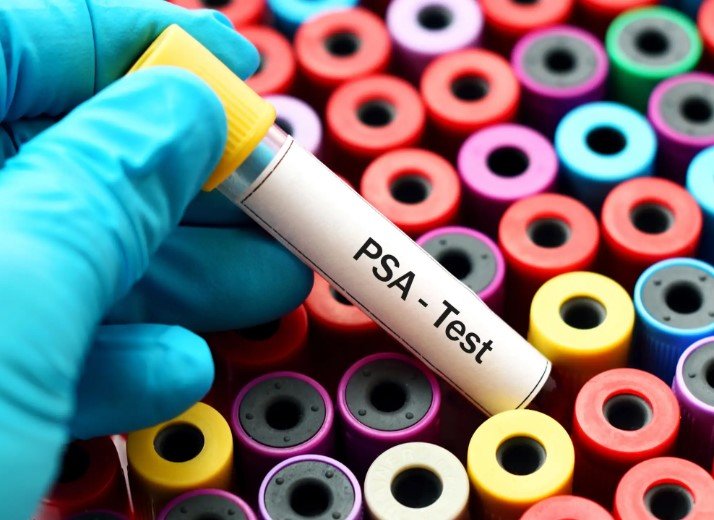A simple blood test known as the PSA test is helping men catch prostate cancer early, slashing the risk of death from this common disease by up to 50 percent, according to the latest medical studies. As awareness grows in 2025, experts urge men over 50 to talk with their doctors about screening, especially amid rising global cases that hit over 1.5 million new diagnoses last year.
What is Prostate Cancer and Why It Matters
Prostate cancer ranks as the second most common cancer among men worldwide. It starts in the prostate gland, which sits below the bladder and produces fluid for semen.
This disease often grows slowly, and many men live with it for years without symptoms. But when it spreads, it can become deadly.
Recent data shows that early action through screening saves lives. In fact, global health reports from 2025 note that timely detection has led to better outcomes in countries with strong testing programs.
Experts point out that lifestyle factors like diet and exercise play a role, but testing remains key. Without early checks, the cancer can advance quietly, making treatment harder.
Understanding the PSA Test
The PSA test measures prostate-specific antigen, a protein made by prostate cells. Doctors take a small blood sample to check PSA levels.
High levels might signal cancer, infection, or other issues. If results are elevated, further steps like imaging or biopsies follow.

This test is quick and painless, often done during a routine checkup. Many health groups now back it as a first line of defense.
In 2025, new guidelines stress its value for men at higher risk. Advances in testing accuracy have made it more reliable than ever.
Studies show that combining PSA with other tools boosts detection rates. This approach helps avoid unnecessary procedures.
Benefits of Early Detection
Catching prostate cancer early transforms outcomes. Research from major trials reveals that PSA screening reduces death risk by 21 to 50 percent.
One key study followed thousands of men over decades. Those screened early had far lower rates of advanced cancer.
Early finds allow for milder treatments like active surveillance. This means watching the cancer closely without immediate surgery or radiation.
Men benefit from preserved quality of life. They avoid severe symptoms and harsh therapies that come with late-stage disease.
Beyond survival, early detection cuts healthcare costs. It prevents the need for expensive, long-term care in advanced cases.
Personal stories highlight the impact. Many survivors credit routine PSA tests for their recovery, sharing how it gave them years with family.
Latest Prostate Cancer Statistics in 2025
Global cases continue to climb, with over 1.5 million new diagnoses reported in 2024. By 2025, experts predict a slight rise due to aging populations.
In the United States, about one in eight men will face this cancer in their lifetime. Death rates have dropped 50 percent since PSA testing became widespread.
Screening rates vary. Recent surveys show 40 percent of men aged 55 to 69 got tested last year, up from previous years.
| Statistic | Detail | Source Insight |
|---|---|---|
| New Cases Worldwide (2024) | 1.5 million | Rising due to better reporting |
| US Lifetime Risk | 1 in 8 men | Higher in certain groups |
| Mortality Reduction from PSA | Up to 50% | From long-term studies |
| Screening Rate (Ages 55-69) | 40% | Increasing with awareness |
These numbers underscore the need for action. Awareness campaigns in 2025 aim to boost testing, especially in underserved areas.
Prostate cancer hits harder in some groups. Family history, age, and ethnicity raise risks, with Black men facing higher rates.
Who Should Consider PSA Screening
Guidelines suggest men start discussing PSA tests at age 50. Those with family history or other risks might begin at 40 or 45.
Doctors tailor advice based on personal factors. A quick chat can clarify if testing fits.
- Men aged 50+: Routine talks with doctors recommended.
- High-risk groups: Earlier screening for those with relatives who had prostate cancer.
- Frequency: Often every two years, depending on results.
Not everyone needs it right away. Healthy men without symptoms might weigh pros and cons.
Recent updates in 2025 include new tools like urine tests that complement PSA. These could make screening even more precise.
Potential Risks and How to Manage Them
PSA testing is not perfect. False positives can lead to worry and extra tests.
Overdiagnosis happens when slow-growing cancers are found that might never cause harm. This leads to unneeded treatments.
Experts advise informed choices. Men should learn both sides before deciding.
Balancing benefits and risks is key. Ongoing research in 2025 refines guidelines to minimize downsides.
Doctors now use risk calculators to guide decisions. This helps ensure testing helps more than it harms.
Expert Tips for Prostate Health
Beyond testing, lifestyle changes support prostate health. A diet rich in fruits, vegetables, and whole grains lowers risks.
Regular exercise and maintaining a healthy weight matter too. Quitting smoking adds protection.
Stay informed about symptoms like trouble urinating or blood in urine. Report them promptly.
As Prostate Cancer Awareness Month wraps up in 2025, health leaders push for more education. Events worldwide highlight stories of survival through early detection.
If this article sparked questions about prostate cancer screening, share your thoughts in the comments or pass it along to a friend. Your input could help spread vital awareness.
